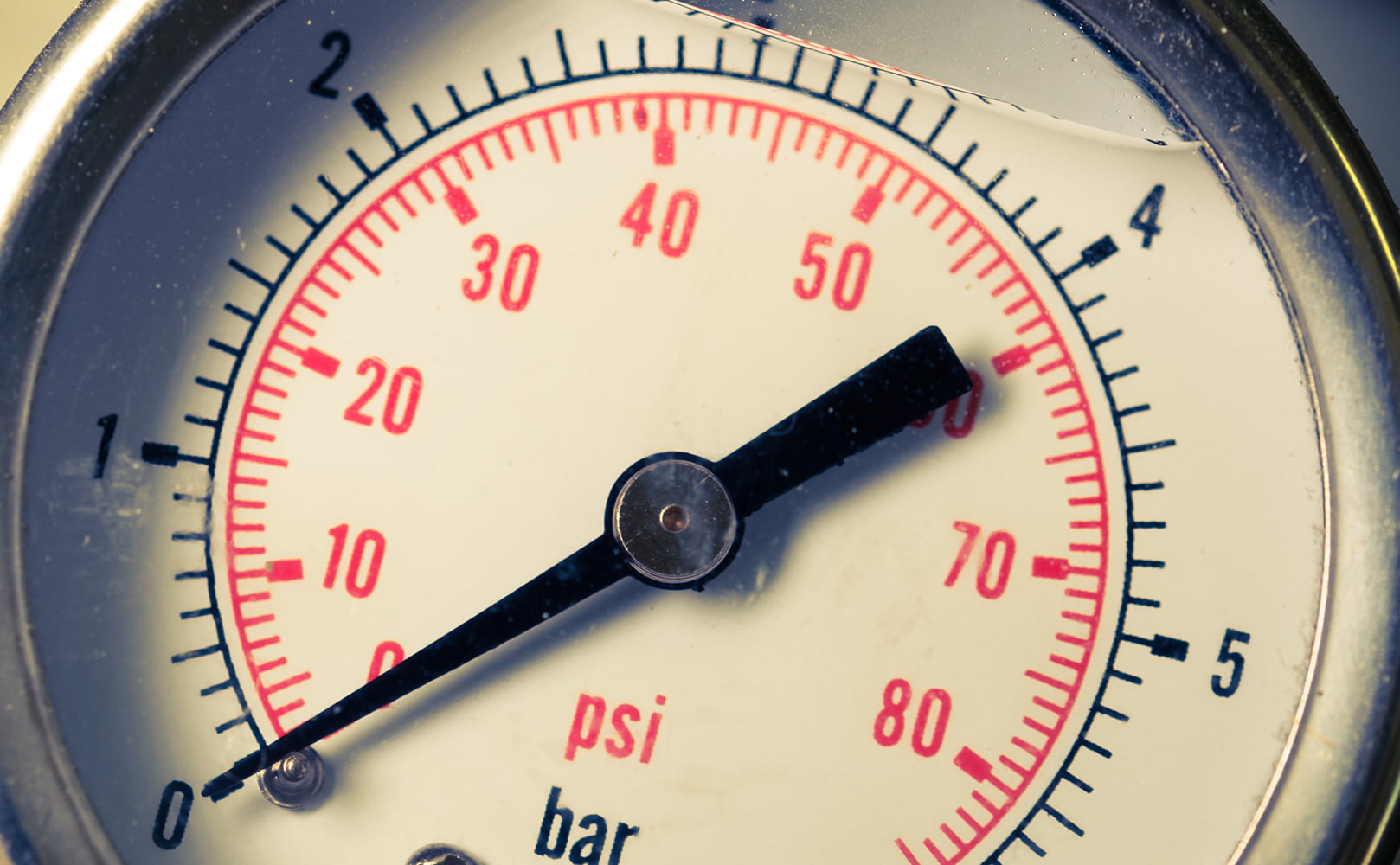RO Tank Pressure Too High? Learn How to Fix Here!
Written by: Alexandra Uta // Last Updated: Mar 15, 2023
This page may contain affiliate links. If you buy a product or service through such a link we earn a commission at no extra cost to you. Learn more.
A reverse osmosis tank relies on a certain level of pressure to operate properly.
If the pressure is too high or too low, it can lead to issues. Thus, you have to keep the tank in check regularly, and you should also be prepared to deal with situations that require immediate attention.
Here’s an overview of what to expect when the pressure in your tank is too high.
Key Takeaways
- If the pressure in your RO tank is too high, this can cause problems like the tank not filling up or the RO system working more slowly. You might also have to deal with more wastewater than usual and lower contaminant reduction rates.
- In order to adjust RO tank pressure that’s too high (recommended range is around 6 to 8 psi), you need to drain the entire tank and read pressure once the tank is completely empty. You can release pressure by pushing the Schrader valve.
What Happens If RO Tank Pressure Is Too High?
If the pressure in your RO tank is too high, it can cause various problems. Some of those might take some time to present themselves, so you need to keep an eye on your current situation.
RO Tank Not Filling Up
With too much pressure in the tank, you’ll have trouble filling it up. That’s because the tank causes more backpressure which triggers the RO system’s automatic shut-off valve to close ahead of time. As a result, the entire systems shuts down and no more water is being purified.
Slowed Water Purification
The system will work more slowly, too. Again, higher backpressure caused by the RO tank is the culprit. It pushes against the feed water pressure, so water moves slower through the filtration process.
Less Effective Contaminant Removal
Not only that, but the purification process itself will work less efficiently. You may see a higher concentration of leftover contaminants in your filtered water as a result.
Additional Wastewater
Reverse osmosis wastes some water as a natural effect of its operation. While certain amounts are acceptable, you should be careful with your pressure levels because you risk wasting a lot more water than you normally do with an over-pressurized RO tank.
Instructions for How to Adjust Reverse Osmosis Tank Pressure
When dealing with tank pressure levels that are too high, there are some steps you can take to relieve your system and bring the pressure down to acceptable levels. Always follow your manufacturer’s exact guidelines if they have any instructions for that, as there are small differences from one system to another!
How Much Pressure Is Right?
Ideally, you should be aiming at tank pressure levels of 6-8 psi. This measurement must be taken when the tank is completely empty. You’ll have some minor differences between tank models, so check your own model’s specifications to make sure you’re on the right track.
1. Shut off Your Water Supply
Before you begin, shut off your water supply. You don’t need to shut it off at the mains, it’s enough to cut off flow to the RO system.
2. Flush the Tank
Turn on the RO faucet and keep water running until it stops.
3. Disconnect the Tank
Disconnect the tank from the system.
4. Drain the Tank Completely
Open the tank’s valve to drain out any remaining water. At some point, you will need to add additional pressure using an air pump.
5. Check Your Current Pressure Level
You’re ready to measure the pressure level of your RO tank once empty. Use a standard pressure gauge. A properly pressurized tank should read around 6-8 psi.
6. Adjust Pressure
If you empty RO tank pressure is too high, release some of it by pushing on the Schrader valve.
7. Hook the Tank Back Up
Once everything is done, you can hook the tank back up and reconnect all tubing.
How Does a Reverse Osmosis Tank Work?
A reverse osmosis tank is a simple contraption. The internal chamber is split into two parts. One holds water, and the other holds air. A bladder separates the two parts and helps keep the pressure between them.
When you start filling the tank with water, this creates pressure by compressing the air storage. Once you want to dispense water, you just have to turn the faucet – the pressure inside the tank will do all the work without the need for any pumps.
It’s the same pressure that causes the entire reverse osmosis filter system to shut off once it reaches a certain level indicating that the tank is full.
How Long Should It Take to Fill an RO Pressure Tank?
This depends on the size of the tank and how fast your RO system operates, but you should expect it to take anywhere between 2 to 4+ hours. If it takes much longer than that, you should check for potential problems. It’s not a bad sign by default, but it could be problematic when combined with other indicators.
If you have any questions about your RO tank pressure being too high please don’t hesitate to leave a comment below!
Information provided on BOS is for educational purposes only. The products and services we review may not be right for your individual circumstances.
We adhere to strict editorial guidelines. Rest assured, the opinions expressed have not been provided, reviewed, or otherwise endorsed by our partners – they are unbiased, independent, and the author’s alone. We fact-check all content for accuracy. It is accurate as of the date posted and to the best of our knowledge.


